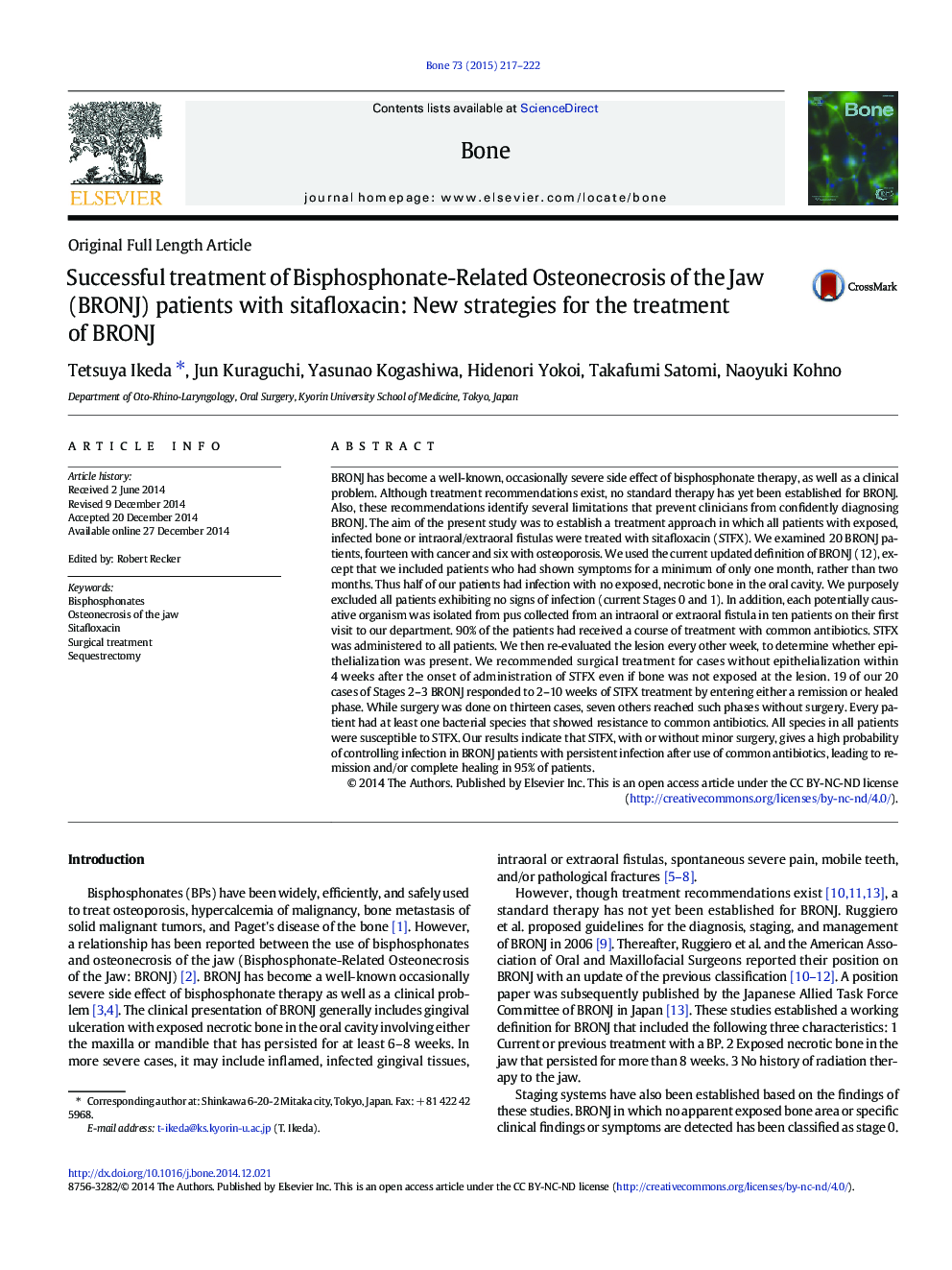| کد مقاله | کد نشریه | سال انتشار | مقاله انگلیسی | نسخه تمام متن |
|---|---|---|---|---|
| 5889973 | 1568146 | 2015 | 6 صفحه PDF | دانلود رایگان |
عنوان انگلیسی مقاله ISI
Successful treatment of Bisphosphonate-Related Osteonecrosis of the Jaw (BRONJ) patients with sitafloxacin: New strategies for the treatment of BRONJ
دانلود مقاله + سفارش ترجمه
دانلود مقاله ISI انگلیسی
رایگان برای ایرانیان
کلمات کلیدی
موضوعات مرتبط
علوم زیستی و بیوفناوری
بیوشیمی، ژنتیک و زیست شناسی مولکولی
زیست شناسی تکاملی
پیش نمایش صفحه اول مقاله

چکیده انگلیسی
BRONJ has become a well-known, occasionally severe side effect of bisphosphonate therapy, as well as a clinical problem. Although treatment recommendations exist, no standard therapy has yet been established for BRONJ. Also, these recommendations identify several limitations that prevent clinicians from confidently diagnosing BRONJ. The aim of the present study was to establish a treatment approach in which all patients with exposed, infected bone or intraoral/extraoral fistulas were treated with sitafloxacin (STFX). We examined 20 BRONJ patients, fourteen with cancer and six with osteoporosis. We used the current updated definition of BRONJ (12), except that we included patients who had shown symptoms for a minimum of only one month, rather than two months. Thus half of our patients had infection with no exposed, necrotic bone in the oral cavity. We purposely excluded all patients exhibiting no signs of infection (current Stages 0 and 1). In addition, each potentially causative organism was isolated from pus collected from an intraoral or extraoral fistula in ten patients on their first visit to our department. 90% of the patients had received a course of treatment with common antibiotics. STFX was administered to all patients. We then re-evaluated the lesion every other week, to determine whether epithelialization was present. We recommended surgical treatment for cases without epithelialization within 4Â weeks after the onset of administration of STFX even if bone was not exposed at the lesion. 19 of our 20 cases of Stages 2-3 BRONJ responded to 2-10Â weeks of STFX treatment by entering either a remission or healed phase. While surgery was done on thirteen cases, seven others reached such phases without surgery. Every patient had at least one bacterial species that showed resistance to common antibiotics. All species in all patients were susceptible to STFX. Our results indicate that STFX, with or without minor surgery, gives a high probability of controlling infection in BRONJ patients with persistent infection after use of common antibiotics, leading to remission and/or complete healing in 95% of patients.
ناشر
Database: Elsevier - ScienceDirect (ساینس دایرکت)
Journal: Bone - Volume 73, April 2015, Pages 217-222
Journal: Bone - Volume 73, April 2015, Pages 217-222
نویسندگان
Tetsuya Ikeda, Jun Kuraguchi, Yasunao Kogashiwa, Hidenori Yokoi, Takafumi Satomi, Naoyuki Kohno,